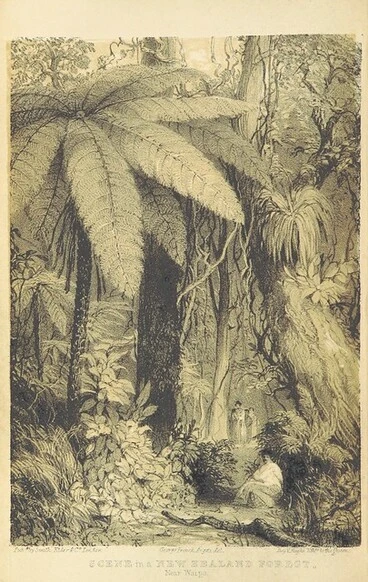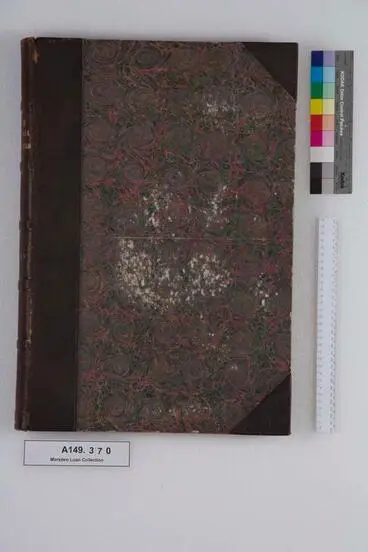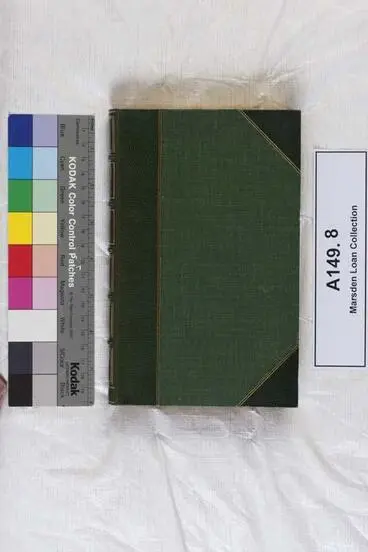When Hemi Pōmare met Queen Victoria
A DigitalNZ Story by Zokoroa
The adventures of teenager Hemi Pomare in London during 1846 with painter George Angas and how they met Queen Victoria and attended exhibitions with London society.
Chatham Isalnds, Hemi Pomare, George Angas, Painting, History, Art History
Hemi Pōmare met Queen Victoria and Prince Albert in London during 1846 when he was a teenager. He also attended various exhibitions with British artist George Angas who was in his early twenties. Angas painted Pōmare's portrait which is now held by the Alexander Turnbull Library. A wood engraving of Pōmare appeared in the Illustrated London News in its report of an exhibition of Angas' work in London. Pōmare's photograph was also taken by London-based French daguerreotypist Antoine Claudet and is the oldest known photograph of a Māori person. A novel has been written based on Pōmare by Tina Makereti. It was announced during 2020, that a movie was being planned by NZ director Taika Waititi. Who was Pōmare? How did he get to know Angas? Why were both in London? How did he meet Queen Victoria? Let's find out!
Hemi Pōmare (born c.1830) painted by British artist George French Angas during 1844-1846
He is shown wearing a kaitaka or finest flax garment over a white shirt and white pants, and wearing black shoes
Alexander Turnbull Library
PORTRAIT painted by George Angas during 1844-1846
The portrait of Hemi Pōmare was painted by British artist George French Angas. Twenty-two year old Angas had visited South Australia and then NZ on painting exhibitions during 1844. He then returned to Australia to visit Adelaide and Sydney during 1845. Angas first met teenager Pōmare either in NZ or Sydney where Pōmare was attending an English boarding school. Pōmare accompanied Angas from Sydney to London in September 1845, and then he returned to NZ in 1847.
British painter George French Angas (1822-1866)
Visited South Australia & NZ on painting expeditions in 1844-1845, & returned to London in Sept 1845 joined by Pōmare
Alexander Turnbull Library
Hence, the portrait of Hemi Pōmare is dated as being painted sometime between 1844-1846. However, as no lithograph of the portrait appears in Angas' folio, "The New Zealander's illustrated" (London, 1847), it may have been drawn after Angas visited New Zealand. See: National Library catalogue record description. The painting was exhibited by Angas in London during 1846 and held in various private collections until being purchased by the Alexander Turnbull Library in 2006/2007.
Pōmare's portrait does not appear in Angas' NZ lithographs, suggesting it may have been drawn after visiting NZ
Angas, George French, 1822-1886 :The New Zealanders illustrated by George French Angas. Lithographed by Louisa Hawkins. London, Thomas McLean, 1847.
Alexander Turnbull Library
PŌMARE AND ANGAS IN LONDON, 1846
After sailing together from Sydney on 10 Sept 1845, Angas and Pōmare arrived in Dover on 22 February 1846. Angas held various exhibitions in London. Pōmare was presented as a living 'curiosity' dressed in traditional Māori clothing. Angas' first exhibition was held on 17 March 1846 at the 5th soiree of the British and Foreign Institution. This was followed by his exhibition at the Egyptian Hall, Piccadilly which was promoted in advertisements as being under the patronage of Queen Victoria and Principal Albert.
Pōmare met Queen Victoria & Prince Albert in London on 3 April 1846
Alexander Turnbull Library
Three days prior to the official opening at the Egyptian Hall exhibition, Angas and Pōmare were invited to a private meeting with Queen Victoria and Prince Albert on 3 April 1846. It was reported in the Times (4 April 1845), "Mr. Angas had the honor of submitting drawings in South Australia, New Holland, and New Zealand, on the 3rd April, to the Queen and Prince Albert at Buckinghana Palace. Mr. Angas was accompanied by James Pomare, grandson of the chief of the Chatham Isles, New Zealand." The Royal couple became patrons of the two illustrated folios that Angas subsequently published on South Australia and New Zealand in 1847.
Pōmare accompanied Angas who shared his paintings at Buckingham Palace
The newspaper article described Pōmare as being the grandson of the chief of the Chatham Islands
National Library of New Zealand
WOOD ENGRAVING OF PŌMARE IN 'ILLUSTRATED LONDON NEWS':
Angas' exhibition at the Egyptian Hall, Piccadilly ran for three months from 6 April to 23 June 1846. It was promoted as having "One Hundred Portraits of the Natives and Scenery of Australia" and "Comprising upwards of 200 Full-length Portraits, from Life, of the Principal New Zealand Chiefs, With their Wives and Children." "A Young New Zealand Chief will attend in the room in his Costume" (See poster on Trove.) The opening was reported in the Illustrated London News (18 April 1846), with a wood engraving of "a New Zealand youth, about fourteen years of age, and named James Pomara" who "has been educated in New South Wales, speaks English fluently, and is a very intelligent person." He was shown dressed in a Māori cloak and holding a taiaha.
Angas opened his exhibition at Egyptian Hall, Piccadilly on 6 April 1846. Pomare was presented as a living 'curiosity'.
The exhibition was promoted as "Under the especial patronage of the QUEEN and H.R. Prince ALBERT"
National Library of New Zealand
DISCOVERY OF OLDEST PHOTO OF MĀORI PERSON (PŌMARE):
Events in London that Angas and Pōmare attended included a Royal Society meeting held by its President, the Marquis of Northampton. The Times (6 April) reported that also present were Charles Dickens, Charles Darwin, and the pioneering London-based French daguerreotypist Antoine Claudet.
Pōmare & Angas attended a Royal Society soiree by Marquis of Northampton
Newspaper reported, "The chieftain was attired in the full costume of his native country" and "brought a spear"
National Library of New Zealand
Pōmare's photograph was taken by Antoine Claudet and the quarter-plate daguerreotype was hand tinted with colour. Hemi is shown standing full length in his korowai that he wore for the Angas portrait. He wears a kuru pounamu (greenstone ear pendant) and holds a patu onewa (short-handled weapon). A feathered headdress fans out from underneath his hair. The daguerreotype was purchased in the 1960s for the National Library of Australia’s photography collections by Eric Keast Burke.
Photo taken by London-based French daguerreotypist Antoine Claude
Purchased in 1960s for the National Library of Australia’s photography collections, it was 'rediscovered' in 2020
Trove
Although the daguerreotype of Pōmare was digitised, it had only been partly catalogued by the National Library of Australia. It was "rediscovered" in the collections during 2020 and is thought to be the oldest known of a Māori person.
Oldest known photo of a Māori person (Pōmare) discovered in 2020
Daguerreotype of Pōmare found in National Library of Australia collections
The Spinoff
Book and a movie
Pōmare is the basis for the character James Pōneke in Tina Makereti’s 2018 novel, The Imaginary Lives of James Pōneke, which NZ director Taika Waititi announced during 2020 his production company Piki Films is adapting as a film.
Source:
- Massey University: News (2018, 20 September): Novel reveals Victorian London through Māori eyes. https://www.massey.ac.nz/massey/about-massey/news/article.cfm?mnarticle_uuid=828D0059-1096-4033-84B6-388EADC1C8A6
- Charlotte Graham-McLay (2020, 26 June). "Indigenous voices at the centre': Taika Waititi signs on Māori writers for colonisation projects." The Guardian. https://www.theguardian.com/film/2020/feb/10/taika-waititi-first-maori-oscars-2020-indigenous-new-zealand
Pōmare is the inspiration for a historical novel of which a film adaptation is planned by Waititi
Radio New Zealand
BACKSTORY:
WHO WAS Hemi PŌMARE & HIS FAMILY?
Hemi (James) Pōmare of Ngāti Mutunga was born around 1830. Little is known of Pōmare's parents and his life. When he was in London in 1846-47, newspapers described Pōmare as "the orphaned son of a Chatham Islands chief" and the "grandson of the chief of the Chatham Isles, New Zealand". The social hierarchy of Te Ao Māori (the Māori world) included a chief (rangatira) and a senior or paramount chief (ariki).
Source: Wikipedia: Hemi Pōmara, https://en.wikipedia.org/wiki/Hemi_Pomara
Orphaned son or the grandson of a Chatham Islands Chief?
When in London, Pōmare was described as being "the orphaned son" or the grandson of a Chatham Islands chief
Victoria University of Wellington
RELATED TO CHIEF PŌMARE NGATATA (WIREMU PŌMARE) OF Chatham Islands?
Hemi Pōmare was thought to be related to Chief Pōmare Ngatata (c.1804-1851) of Ngāti Mutunga. Chief Pōmare was closely related to Ngātata-i-te-rangi of Ngāti Te Whiti and Ngāti Tāwhirikura hapū of Te Ati Awa. His first wife was Tawhiti, niece of Te Rauparaha of Ngāti Toa; and they had three children by 1834.
Source: Angela Ballara. 'Pōmare, Wiremu Piti', Dictionary of New Zealand Biography, first published in 1990. Te Ara - the Encyclopedia of New Zealand, https://teara.govt.nz/en/biographies/1p22/pomare-wiremu-piti
Ngāti Mutunga migrated from North Taranaki to Wellington, 1820s-1830s:
The ancestral lands of Ngāti Mutunga extended from north of Waitara, Taranaki, to Mōkau. After being repeatedly invaded by Waikato iwi, Ngāti Mutunga began migrating to Port Nicholson and the Wellington area during the 1820s and 1830s. During a Land Commission hearing, Wiremu Pōmare stated he arrived at Wellington four years prior to 1831 when he had sold some land to David Scott to build a house. [Source: Ward, Alan (1998). Māori Customary Interests in the Port Nicholson District, 1820s to 1840s: Appendix D, p.198.]
Ngāti Mutunga extended from north of Waitara, Taranaki, to Mōkau
Tribal groups in Taranaki
Manatū Taonga, the Ministry for Culture and Heritage
Ngāti Mutungu migrated to Wellington area, 1820s-1830s
Part 1 - The Migration Of Ngatiawa To Port Nicholson, By A. Shand (Journal of the Polynesian Society: The Occupation Of The Chatham Islands By The ...
The University of Auckland Library
Ngati-Mutunga Tribe — Table No. XXXIII. A
Victoria University of Wellington
Te Aro pā in Wellington was built by Ngāti Mutunga
Te Aro pā in 1842
Manatū Taonga, the Ministry for Culture and Heritage
Wiremu Pōmare's brother, Tiwai (Tewai) was killed in battle, 1834
With growing tensions between iwi, Ngāti Mutunga had joined with Ngāti Toa and the Ngāti Tama to defeat the Ngāti Ira iwi in the Wellington region. During a later battle with Ngāti Raukawa at Haowhenua in 1834, Wiremu Pōmare's brother Te Waka-tīwai (Tewai) was killed. Shortly afterwards, when the brothers of Pōmare's wife (Tawhiti) desecrated Tewai's grave, Wiremu sent Tawhiti and the two younger of their three children back to her uncle Te Rauparaha. Later that year, Wiremu married his second wife, Hera Waitaoro Toheroa (a daughter of Te Manu Toheroa of Puketapu).
Source: Wikipedia: Ngāti Mutunga https://en.wikipedia.org/wiki/Ng%C4%81ti_Mutunga
Was Hemi Pōmare the orphaned nephew of Wiremu Pōmare?
In 1834, Wiremu Pōmare's brother, Tiwai (Tewai) was killed in battle with other iwi
Victoria University of Wellington
Ngāti Mutungu migrated to Chatham Islands, 1835:
During November - December 1835, Ngāti Mutungu and Ngāti Tama moved to the Chatham Islands (also called Rēkohu or Wharekauri), which had already been settled by the Moriori. Later both Iwi attacked the Moriori and then fought each other over land. (See Wikipedia: Ngāti Mutungu). When Paramount Chief Patukawenga died, Chief Wiremu Pōmare succeeded him in 1836–37. During a visit to Port Nicholson in 1842, Pōmare was baptised by Octavius Hadfield and took the name Wiremu (Wi) Piti (William Pitt) Pōmare. When he died on 29 January 1851, his nephew, Wiremu Naera Pōmare, succeeded him as tribal leader.
During Nov-Dec 1835, Ngāti Mutungu migrated to the Chatham Islands which were already settled by Moriori
Part II - The Migration Of Ngatiawa To Chatham Island, By A. Shand, P154-163 (Journal of the Polynesian Society: The Occupation Of The Chatham Isla...
The University of Auckland Library
Ngāti Mutungu and Ngāti Tama attacked the Moriori and, later, each other over land acquisition
Chapter VI. — New Zealand.—The Middle Island Provinces; The Chatham and Auckland Islands - Polynesia; A popular description of the physical feature...
Victoria University of Wellington
Ngāti Mutunga pā on the left and Kaimātaotao pā on the right
Kaimātaotao pā
Manatū Taonga, the Ministry for Culture and Heritage
Was Hemi Pōmare the Son of the Chief's half-sister?
Alternatively, Miria Pomare (a descendant of Ngatata) says: “A potential possibility is that Hemi was the son of Pomare Ngatata’s half-sister named Te Hekenga and her husband who was a French Whaler and I think this theory would appear to be supported by Hemi’s appearance in the photograph as a half-caste potentially with slightly fairer coloured skin.” (See: RNZ, 20 July 2020).
Was Hemi Pōmare the son of the Chief's half-sister?
Son of Wiremu Pōmare's half-sister named Te Hekenga and her husband who was a French Whaler
Radio New Zealand
Who was British painter George French ANGAS (1822-1886)?
George French Angas was born on 25 April 1822 in Newcastle upon Tyne, England. His parents were George Fife Angas and Rosetta French who married in 1812. Angas was their fourth of seven children and eldest son. His father, a coachmaker, shipping merchant and banker, was chairman of the South Australian Company, which had been set up in 1835 to develop new settlements for immigrants in the new colony. Angas worked for a year in his father's counting house in London. His interest in natural history and drawing lead to him taking art lessons with natural history artist Benjamin Waterhouse Hawkins. Afterwards, he set off on a sketching tour of the Mediterranean in 1841 which led to his publishing "A ramble in Malta and Sicily, in the autumn of 1841" the following year.
Source: Moira M. Long. 'Angas, George French', Dictionary of New Zealand Biography, first published in 1990. Te Ara - the Encyclopedia of New Zealand, https://teara.govt.nz/mi/biographies/1a7/angas-george-french
George French Angas
Manatū Taonga, the Ministry for Culture and Heritage
Angas explores South Australia: Jan-July 1844:
When aged 21 years, Angas decided to sail to South Australia on a drawing and painting expedition. He arrived in Adelaide on board the Augustus in January 1844. He joined expeditions around South Australia with William Giles (colonial manager of the South Australia Company) and then with George Grey (Governor of South Australia). Angas later published his sketches and paintings in South Australia illustrated (1847).
Angas explores NZ: July-Nov 1844:
Angas then sailed aboard a South Australian Company schooner to New Zealand in July 1844 where he travelled around for four months. His ship arrived at Port Nicholson (Wellington), and he travelled to Porirua, where he met Te Rauparaha and Te Rangihaeata. He then sailed to Mana Island, south to Cloudy Bay, and then north to Auckland, where he visited Ōrākei Pā. He also visited the Waikato, Lake Taupō and the volcanic plateau. He recorded his adventures in a journal and made pencil and watercolour drawings of Māori clothing, artefacts, dwellings and customs. Angas later published Savage life and scenes in Australia and New Zealand (1847), illustrated with uncoloured lithographs after his own drawings.
Pōtatau Te Wherowhero's pa
Manatū Taonga, the Ministry for Culture and Heritage
A group at the Te Aro Pah by George Angas
Manatū Taonga, the Ministry for Culture and Heritage
Te Henheu's [sic] old pah of Waitahanui, at Taupo Lake
Auckland Art Gallery Toi o Tāmaki
Angas revisits Australia, Nov 1844-July 1845:
After touring around New Zealand, Angas returned to Australia at the end of November 1844 on board the brigantine Coolangatta. His account in Savage life and scenes in Australia and New Zealand mentions "my two fellow-passengers and myself" who were named Owen and Bicknell. (See ENZB: Chapter V, pp. 165, 167) After arriving in Sydney on 30 December, he sailed for Adelaide aboard the Emma brig on New Year's Day. Angas exhibited his paintings in Adelaide and then returned to Sydney aboard the Vanguard, arriving on 21 July 1845. (See: Trove: The Sydney Morning Herald, 30 July 1845, p.3).
Angas set sail for Sydney - the Coolangatta's passengers were listed as "Messrs. Angus and Bicknell", 30 Nov 1844
SHIPPING LIST. (Daily Southern Cross, 30 November 1844)
National Library of New Zealand
Did Pōmare & Angas meEt in NZ or Sydney, 1844-1845?
Differing accounts have Hemi Pōmare and George Angas meeting in New Zealand and in Sydney:
New Zealand:
Te Ara: The Encyclopedia of New Zealand:
"Returning overland to Auckland, Angas departed for Sydney towards the end of 1844, taking with him a young Maori, Hemi (James) Pomara, the orphaned son of a Chatham Islands chief. They sailed on the brig Coolangatta, putting in at Kawau Island before proceeding up the coast, past the Bay of Islands, to reach Sydney on 30 December 1844. In 1845 Angas exhibited his Australian and New Zealand watercolours in Adelaide and Sydney." Whilst Angas, continued with his explorations in Sydney and South Australia, Pomare was placed in a boarding school in Sydney.
Source: Moira M. Long. "Angas, George French", Dictionary of New Zealand Biography, first published in 1990. Te Ara - the Encyclopedia of New Zealand, https://teara.govt.nz/en/biographies/1a7/angas-george-french
Sydney:
Pōmare was adopted and sent to school in Sydney:
The New Zealander newspaper (26 December 1846) commented on Pōmare's origins:
"Gullibility of the English People. - Advertisements and flourishing paragraphs have been going the round of the London Journals, calling upon all the curiosity hunters to visit the Egyptian Hall, Piccadilly, in order to feast their eyes with the sight of Mr. G. F. Angas' young New Zealand Chief. This ruse of Mr. Angas (who it will he recollected is the young artist who perambulated some of the districts of this Colony) is probably profitable, but certainly is not very reputable. We happen to know the history of this young man, whom Mr. Angas is palming upon the English public as the son of Pomare. He is a half-caste, the adopted son of Mr. David Scott, by whom he was maintained, and at whose expense he was educated at Sydney. The young lad knows as much about the real character and habits of his mother's race, as the fools who go to see him. He was committed to the care of Mr. Angas we believe, on the understanding that, he was to be taught the profession of an artist. His present occupation is perhaps the initiatory process by which Mr. Angas proposes to fit him for the labors of the easel. "0 tempora, o mores!"
Source: Papers Past: The New Zealander, Vol 2, No. 82, 26 December 1846, p.2) https://paperspast.natlib.govt.nz/newspapers/NZ18461226.2.4
Pōmare "is a half-caste, the adopted son of Mr. David Scott, by whom he was...educated in Sydney"
The New-Zealander. SATURDAY, DECEMBER 26,1846. (New Zealander, 26 December 1846)
National Library of New Zealand
Pōmare was an orphan who was educated in Sydney by his guardians:
The New Zealander newspaper (15 May 1847) reported on a London court case where Pōmare had been assaulted when returning to London aboard a ship from exploring Grenada and St. Vincent. The solicitor described "James Pomara" as being the "grandson of the celebrated New Zealand chief Pomare. His father was killed and eaten in a native fight, and his mother died when he was very young. He reached Sydney in an English ship, after a variety of adventures, and was educated by his guardians." Source: "English Extracts", New Zealander, 2 (102), p.3 https://paperspast.natlib.govt.nz/newspapers/NZ18470515.2.11
London court case after Pōmare had been assaulted at sea, 1847
English Extracts. (New Zealander, 15 May 1847)
National Library of New Zealand
Pōmare was an orphan kidnapped by a British trader and placed in English boarding school in Sydney:
During 2020, Australian researchers Elisa deCourcy and Martyn Jolly have ventured that Hemi Pōmare’s family were killed during inter-tribal warfare on the Chatham Islands when he was a child. He was seized by a British trader, taken to Sydney in the early 1840s, and placed in an English boarding school, where he met Angas later on who took “guardianship” of him.
Source: Elisa deCourcy and Martyn Jolly (2020, 30 June). "Portrait of Hemi Pōmare as a young man: how the oldest surviving photo of a Māori was uncovered." The Conversation. (Updated 8 July 2020 with name change from Pomara to Pōmare) https://theconversation.com/portrait-of-hemi-pomare-as-a-young-man-how-we-uncovered-the-oldest-surviving-photograph-of-a-maori-141599
Pōmare & ANGAS sail from Sydney to London, Sept 1845
On 10 September 1845, Angas and Pōmare set sail for London aboard the Royal Tar. They visited Rio de Janeiro on the way and arrived at Dover on 22 February 1846. Angas documented the voyage in Savage Life And Scenes In Australia And New Zealand, in which Pōmare is mentioned as "My young New Zealander, Pomara". (See digitised copy on ENZB: Vol 2, p.247: 6 Nov)
Pōmare returns to New Zealand, 1847
In 1846, Pōmare sailed on the Caleb Angas, which was shipwrecked off Barbados. He continued with his journey on the Eliza back to London. During that voyage, he was assaulted by the ship's first mate who was later prosecuted in London. After the court case, Pōmare returned to New Zealand with Edward Eyre, the new Lieutenant-Governor of the New Munster province. Pomare sailed to Sydney and then on to Auckland arriving on 12 July 1847 aboard the Pestonjee Bomanjee.
An account of the court case of the assault on Pōmare by his shipmate
English Extracts. (New Zealander, 15 May 1847)
National Library of New Zealand
Pōmare returned to NZ with Edward Eyre who was appointed Lieutenant-Governor of New Munster province
Page 2 Advertisements Column 2 (New Zealand Spectator and Cook's Strait Guardian, 21 July 1847)
National Library of New Zealand
Passenger list for the Pestonjee Bomanjee
SHIPPING LIST. (Daily Southern Cross, 17 July 1847)
National Library of New Zealand
WHAT HAPPENED TO GEORGE ANGAS?
During 1847 in London, Angas published folios of his travels in Australia and New Zealand, which were illustrated with lithographs. In 1849 Angas visited South Africa which led to the folio publication, The Kafirs illustrated. He had been appointed naturalist to the Turko-Persian Boundary Commission, but returned to England due to ill-health. Later that year he married Alisha Moran in Monkstown, Dublin, Ireland, on 27 December 1849.
Portrait of George French Angas, 1858
Museum of New Zealand Te Papa Tongarewa
During 1850 Angas and Alisha emigrated to South Australia, where his father had settled two years earlier. Angas opened a studio in Adelaide and travelled around New South Wales and Victoria. He published two volumes of lithographs of the goldfields in 1851. Two years later he was appointed secretary of the Australian Museum in Sydney, where he developed his knowledge of conchology (mollusc shells). He returned to South Australia in 1860 and became chairman of the district council of Angaston in the Barossa Valley. George and Alisha raised a family of four daughters who were born between 1850 - 1860.
From 1850-1863, Angas & his wife lived in South Australia where he opened a studio in Adelaide; then returned to London
[Lithographed and engraved sheet music and covers printed in Australia] [picture].
National Library of Australia
In 1863, Angas and his family returned to London. In his later years, Angas developed his interest in natural history and became a member of the Zoological Society and the Linnean Society. At the age of 62, he visited the island of Dominica in the Caribbean for several months to collect butterflies, moths, birds and shells. Angas died on 4 October 1886 in London.
Source:
Angela Ballara. 'Pōmare, Wiremu Piti', Dictionary of New Zealand Biography, first published in 1990. Te Ara - the Encyclopedia of New Zealand, https://teara.govt.nz/en/biographies/1p22/pomare-wiremu-pit
South Australian Museum: Provence: AA 8 George French Angas, http://archives.samuseum.sa.gov.au/aa8/provlist.htm
PUBLICATIONS BY George ANGAS InclUDE:
For a fuller list of publications by and about George French Angas (books, letters, art works) held in the National Library of New Zealand and Alexander Turnbull collections, you can search the National Library Catalogue.
South Australia Illustrated (London, 1847) with hand-coloured lithographed plates
South Australia illustrated
Nelson Provincial Museum
The New Zealanders Illustrated (London, 1847) with hand-coloured lithographed plates
The New Zealanders illustrated, by George French Angas
Manatū Taonga, the Ministry for Culture and Heritage
Savage life and scenes in Australia and New Zealand. 2 vols London, (1847), which give an account of Angas' travels
Savage life and scenes in Australia and New Zealand. Vol. 1
Nelson Provincial Museum
According to Bernard Smith, the paintings by Angas were important in three respects:
"They became ethnographical documents of considerable value. The landscapes were used to illustrate the nature of the country awaiting settlement in the new colonies and so to promote migration. Finally Angas, trained under a natural-history painter himself, included many drawings, in his exhibitions and books, of value mainly to the natural historian."
Source: Smith, Bernard (1960). European vision and the South Pacific 1768-1850; a study in the history of art and ideas. Oxford, Clarendon Press.

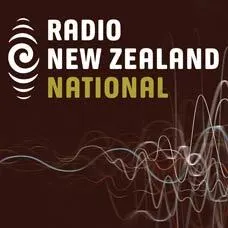




![British Library digitised image from page 20 of "Explorations in Australia. ... With an appendix on the condition of Western Australia. ... Illustrations by G. F. Angas. (Governor Weld's Report [on Western Australia, 30 Sep. 1874] to the Earl of Carnarvon Image: British Library digitised image from page 20 of "Explorations in Australia. ... With an appendix on the condition of Western Australia. ... Illustrations by G. F. Angas. (Governor Weld's Report [on Western Australia, 30 Sep. 1874] to the Earl of Carnarvon](https://thumbnailer.digitalnz.org/?resize=770x&src=https%3A%2F%2Flive.staticflickr.com%2F2828%2F11111311724_ec3a557b95_z.jpg&resize=368%253E)

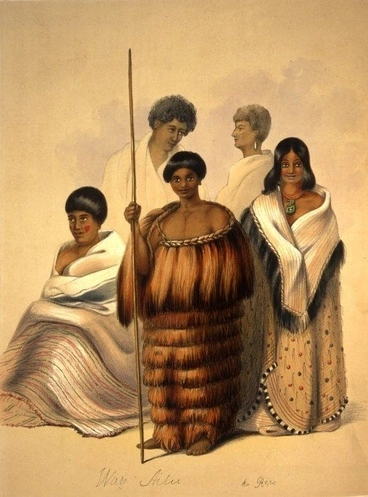
![Te Henheu's [sic] old pah of Waitahanui, at Taupo Lake Image: Te Henheu's [sic] old pah of Waitahanui, at Taupo Lake](https://thumbnailer.digitalnz.org/?resize=770x&src=https%3A%2F%2Fartgallery-collection.cdn.aucklandunlimited.com%2Frecords%2Fimages%2Fmedium%2F11403%2Febf6fba3a9fbb24d7763db2a82bc663a596ff9bc.jpg&resize=368%253E)
